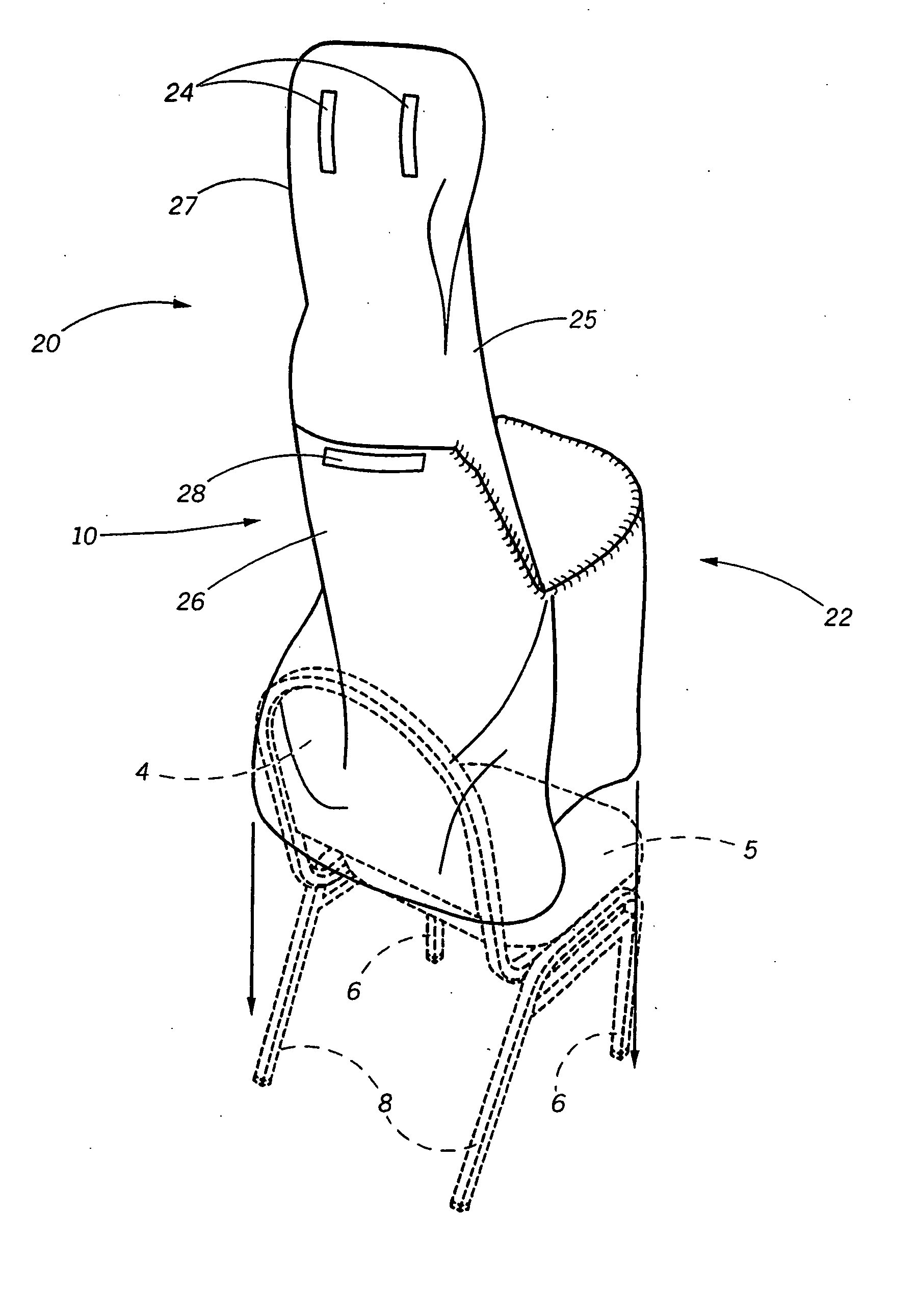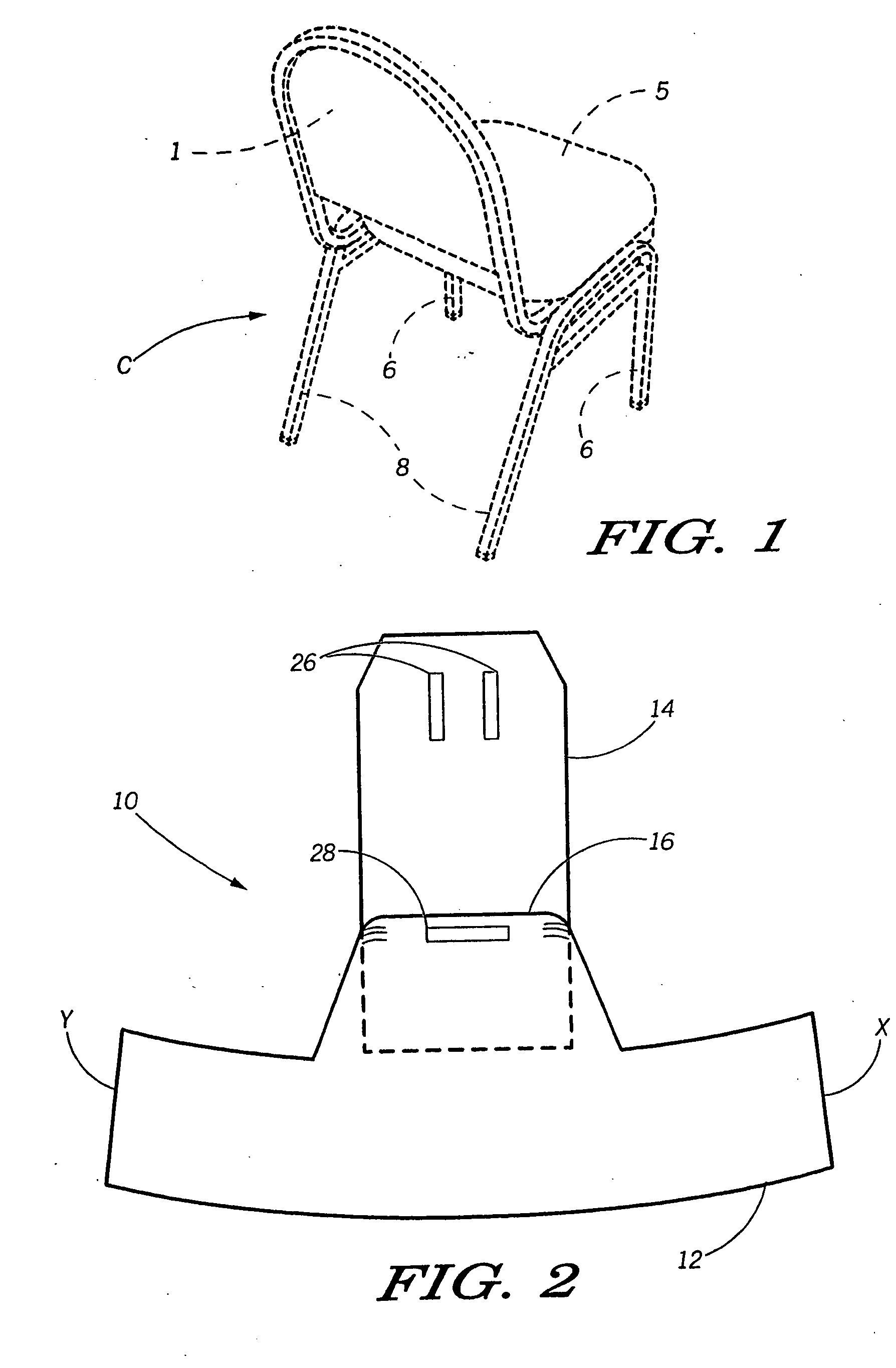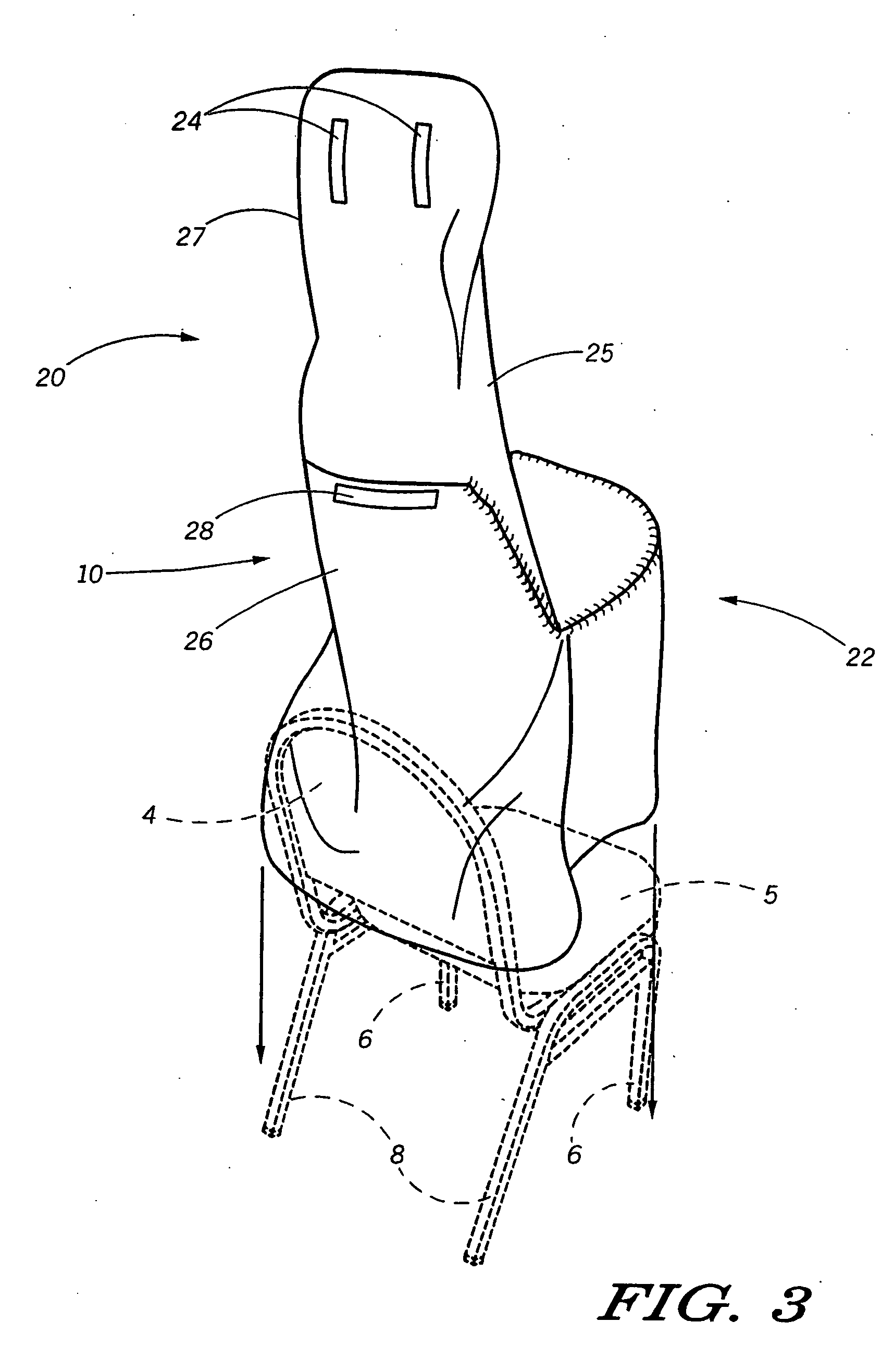Disposable table and chair covers
a table and chair cover and removable technology, applied in the field of furniture coverings, can solve the problems of unsatisfactory demand in the industry, prohibitively high pricing for such covers, and wear of tables and chairs used by a great many people, and achieve the effects of unsanitary conditions, unsanitary conditions, and unsanitary conditions
- Summary
- Abstract
- Description
- Claims
- Application Information
AI Technical Summary
Benefits of technology
Problems solved by technology
Method used
Image
Examples
first embodiment
[0046]FIG. 2 shows a typical pattern layout for the non-woven fabric chair cover of the instant invention prior to the fabric being sewn or otherwise attached together to form a form-fitting chair cover 10. It will be appreciated that the shape of the fabric patterns will vary depending upon the particular chair to be covered. The material may be formed of two panels 12, 14 which are to be sewn together in such a way as to form the cover shown in FIGS. 3 through 9. The panels 12, 14 may be attached through sewing / stitching, ultrasonic welding, adhesive, hook and loop fastener, snaps, buttons, or any other suitable connection structure. The cover 10, as seen in FIGS. 3 through 9, forms generally an upper pocket 20 adapted to at least partially envelope seat back section 4, as well as a lower pocket 22 adapted to envelope seat portion 5 and front and rear legs 6, 8 of chair “C”. In this way, a user of the chair will not through ordinary use be able to come into contact with chair “C” ...
second embodiment
[0056]FIG. 11 shows a typical pattern layout for the non-woven fabric chair cover 110 of the instant invention adapted to be used to cover the folding-type chair shown in FIG. 10. The pattern layout for the cover 110 is shown in FIG. 11 prior to panels 112, 114 being sewn or otherwise attached together to form a form-fitting chair cover 110. The material may be formed of two panels 112, 114 which are to be sewn together in such a way as to form the cover shown in FIGS. 12 through 16. The panels 112, 114 may be attached through sewing / stitching, ultrasonic welding, adhesive, hook and loop fastener, snaps, buttons, or any other suitable connection structure. The cover 110, as seen in FIGS. 13 through 16, forms generally an upper pocket 120 adapted to at least partially envelope seat back section 104, as well as a lower pocket 122 adapted to envelope seat portion 105 and front and rear legs 106, 108 of chair “C1”. In this way, a user of the chair will not through ordinary use be able t...
PUM
 Login to View More
Login to View More Abstract
Description
Claims
Application Information
 Login to View More
Login to View More - R&D
- Intellectual Property
- Life Sciences
- Materials
- Tech Scout
- Unparalleled Data Quality
- Higher Quality Content
- 60% Fewer Hallucinations
Browse by: Latest US Patents, China's latest patents, Technical Efficacy Thesaurus, Application Domain, Technology Topic, Popular Technical Reports.
© 2025 PatSnap. All rights reserved.Legal|Privacy policy|Modern Slavery Act Transparency Statement|Sitemap|About US| Contact US: help@patsnap.com



